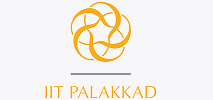Course Title and Code
Advanced Sensors Laboratory (EE5522)
Programme
M.Tech
Course Credit
1-0-3-3 (Lecture-Tutorial-Practical-Total Credits)
Course Category
PME
Prerequisite Course
Sensors and signal conditioning circuits (Corequisite). Elementary knowledge of analog and digital circuits; measurements and instrumentation.
Consent of Teacher
Required
Course Content
| Sl. No. | List of Experiments | Lecture (hours) | Lab (hours) |
|---|---|---|---|
| 1 | Interfacing circuits for resistive sensors: Bridge based Measurements; linearizing circuits for quadrature bridge resistive sensors. | 2 | 3 |
| 2 | Interfacing circuits for capacitive sensors: Calibrating capacitance; Bridge based Measurements; dual slope capacitancetodigital converter. | 2 | 6 |
| 3 | Interfacing circuits for inductive sensors: Implementation of Phase sensitive detector for Interfacing Linear variable differential transformer (LVDT). | 2 | 3 |
| 4 | Introduction to Sensors Development: Design and development of sensors to measure physical parameters such as liquid level, moisture content, metal and proximity detection. | 3 | 12 |
| 5 | Active transducers: Piezoelectric sensors –charge amplifier circuits for interfacing piezoelectric sensors; Temperature measurement using thermocouples. | 2 | 6 |
| 6 | Instrumentation system: Signal conditioning circuits for SensortoFrequency Conversion and direct digitization technique; IoT sensors; Instrumentation system for measurement of nonelectric quantities like displacement, temperature, strain, liquid level, soil moisture. | 3 | 12 |
Learning Objectives
This lab course deals with the underlying principles and performance characteristics of sensor development and signal conditioning circuits. Through this lab course, students will get practical exposure into the different techniques involved in designing interfacing circuits for sensors. From an application perspective, this course will provide a handson insight into the measurement of some of the physical parameters such as displacement, moisture, temperature, liquid level etc.
Learning Outcomes
- Understand the principle of operation and experimental exposure to different types of sensors.
- Practical realization of the interfacing circuits and digitizer for these sensors.
- Analyse, formulate and select the right sensor for a given application.
- Develop and evaluate measurement systems for industrial and scientific applications.
Text Books
- PallasAreny Ramon, John G. Webster. Sensors and signal conditioning. New York: Wiley, 2001. (ISBN: 9780471332329)
- K. Neubert, ‘Instrument TransducersAn introduction to their performance and design’ Oxford University Press, Oxford, Second edition2003 (ISBN: 9780195629972).
- E. O. Doeblin ‘Measurement Systems – Application and Design’ McGraw – Hill Publications, Fifth Edition, 2003 (ISBN: 9780072438864).
References
- De Silva, Clarence W. Sensors and actuators: Engineering system instrumentation. CRC Press, 2015 (ISBN: 9781466506817).
- Ripka, Pavel, Alois Tipek, eds. Modern sensors handbook. John Wiley & Sons, 2013 (ISBN: 9781905209668).
- Khazan, Alexander D. Transducers and their elements: design and application. Prentice Hall, 1994 (ISBN: 9780139294808).
- Fraden, Jacob. Handbook of modern sensors: physics, designs, and applications. Springer Science & Business Media, 2016 (ISBN: 9783319193038).
